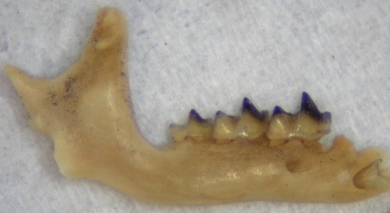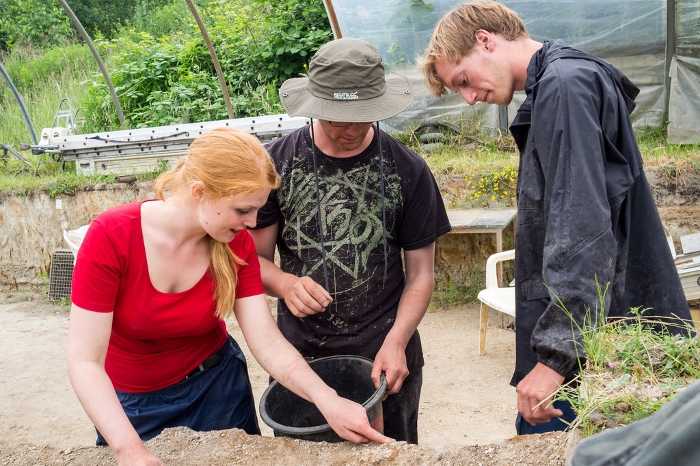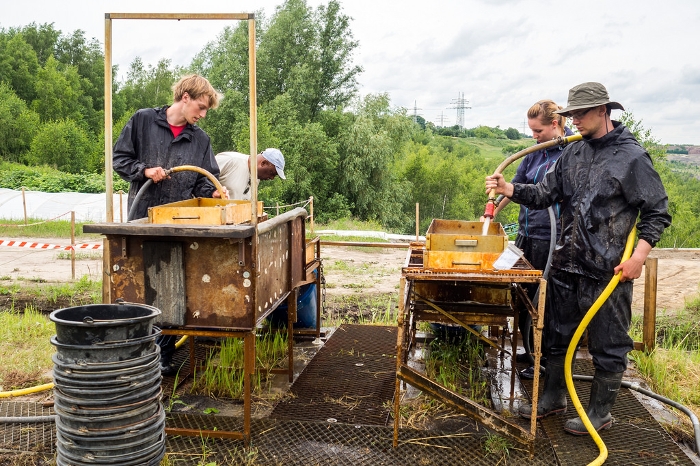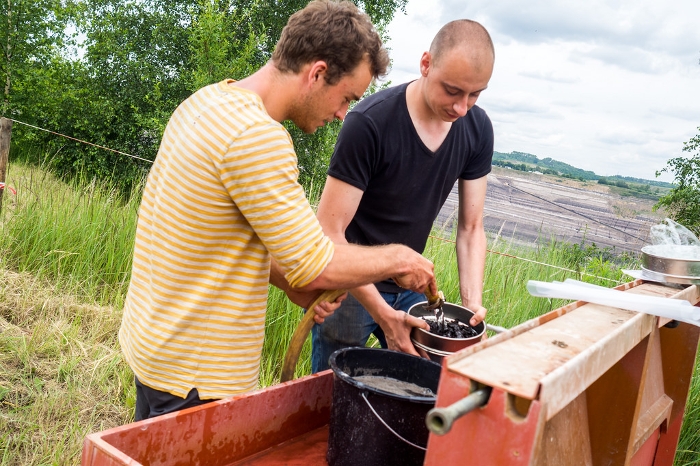
Schöningen field campaign 2016
As every year the Faculty of Archaeology bioarchaeology group has visited Schöningen Germany for field research.
The site became world-famous after the discovery in 1995 and publication in 1997 of the Palaeolithic wooden throwing spears used by early hominins (Homo heidelbergensis) in the region. The spears were found among thousands of remains of mainly butchered horses together with other Lower Palaeolithic stone and wooden artefacts.
Saber-toothed cat
In the past year remains of an impressive carnivore have been collected during the archaeological excavations by the German team and in the sieving residue of André Ramcharan (Faculty of Archaeology, Leiden).
It’s a mouse

Since 1992 the Leiden research however has focused more specifically on collecting smaller vertebrate fossils mainly different species of mice. This year, 2016, a group of students of the Faculty of Archaeology, Leiden University (Sander Aerts, Diantha Boerboom, Lars den Boef, Donna de Groene, Sander Hilgen, Carli Peters, Jiali Song, Martijn Wezenbeek) visited Schöningen under supervision of André Ramcharan and Thijs van Kolfschoten.
Soak and sieves


The students took sediment samples from specific layers (fig. 1). After soaking these sediments for a few hours, and fractionating the sediment samples using sieves and water (fig. 2). The sediment fraction smaller than 1 mm was washed away leaving the larger fractions to be dried and sorted at the site or at the Faculty in Leiden.
The first results indicate that the layers which came accessible for the first time this year are exceptional rich in vertebrate remains. The fossils are from levels of an age of ca 325.000 years.
The Beatles in Germany?
This year for the first time we took a systematic look at fossil insects, in particular beetles. Sander Aerts and Sander Hilgen (fig. 3) took sediment samples from the different layers and process the samples in a specific way to collect insect remains. In the test samples they took they discovered a large amount of insect remains from a variety of species.

These insects are highly specific for both climate and ecology. This insect dataset therefor helps to reconstruct the palaeoenvironment in which the early hominins operated.
Palaeoenvironment
The analyses of the fossil vertebrate record by students of the Faculty of Archaeology, Leiden University, yielded important data that contributes to the reconstruction of the palaeoenvironment during hominin occupation of the region.
